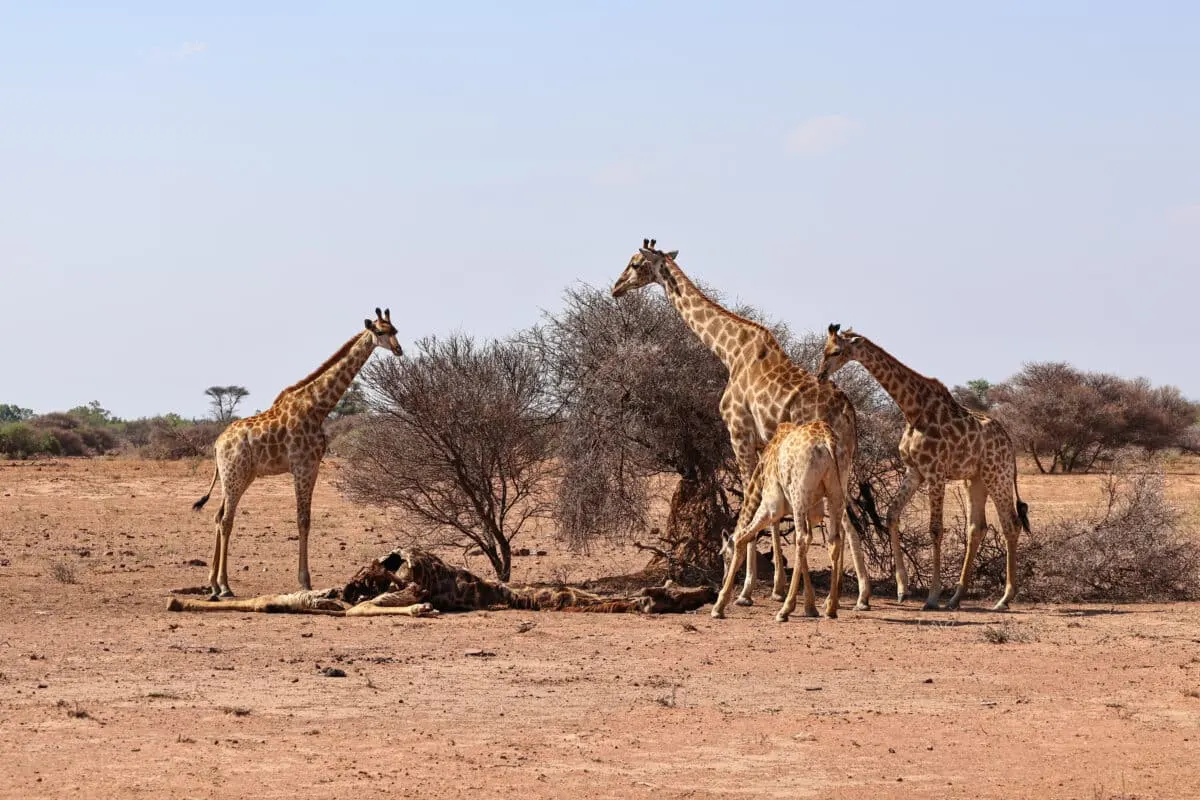Giraffes, with their long necks and distinctive patterns, are among the most iconic animals of the African savannah. But beyond their physical attributes, these creatures have complex social structures and behaviours that have intrigued scientists for years. One question often posed is: do giraffes mourn or grieve the loss of herd members?
Giraffe Mourning Observation In The Wild
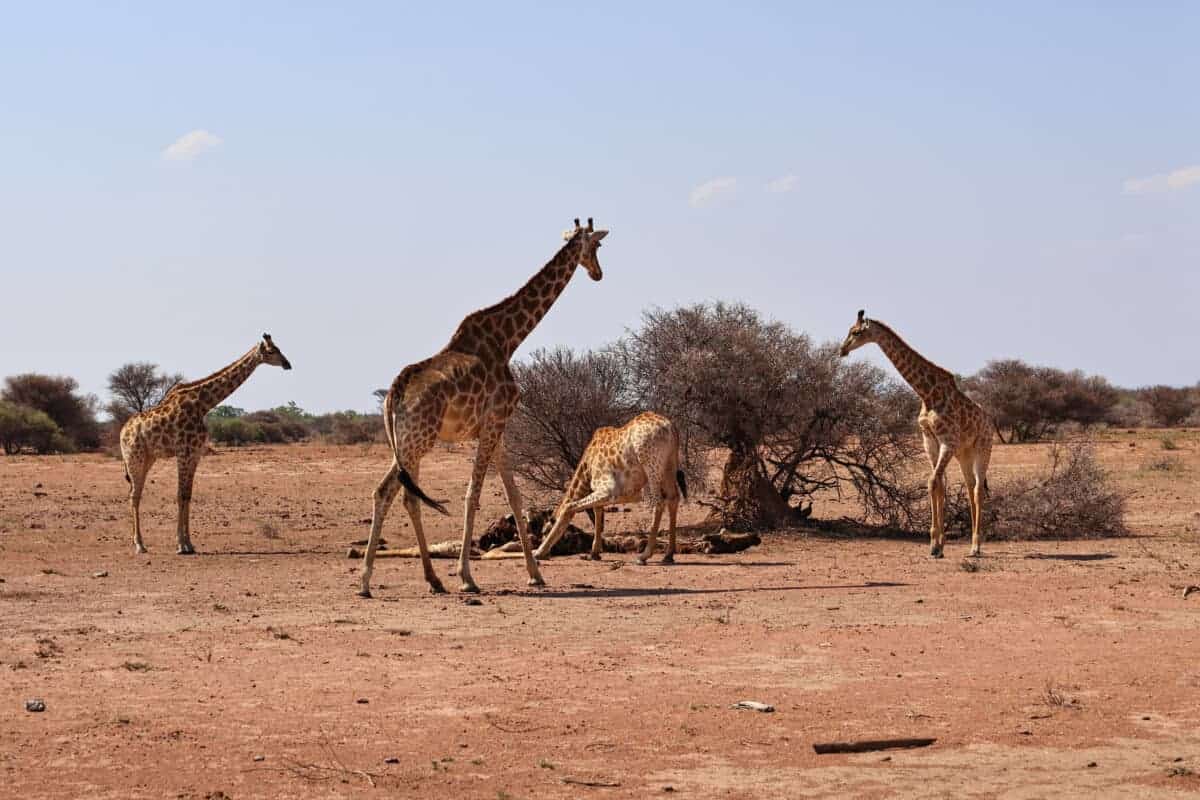
Game ranger Matt Lailvaux, stationed at Marataba Camps in South Africa, had a rare and intriguing encounter with a group of giraffes. The giraffes appeared to be mourning the loss of one of their own. Lailvaux recalled the incident in which a male giraffe met his demise at the hands of another male giraffe during a fight.
More On The Sighting
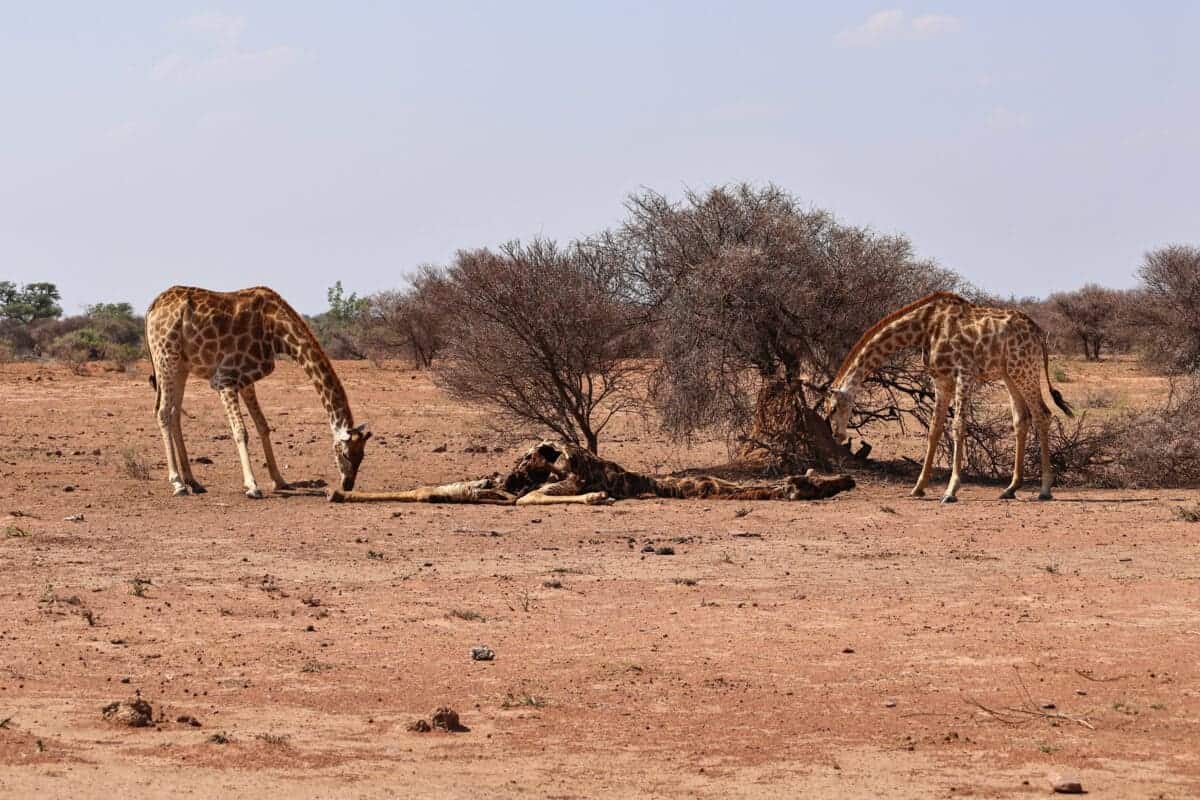
The carcass left in the bush drew the attention of lions and hyenas, who scavenged on the remains. Interestingly, the giraffes returned to the location of the carcass and observers noticed them engaging in the unusual behavior of licking the decomposing corpse, especially around its facial area. After discussing this sighting with fellow rangers in the park, they collectively speculated that this might indeed be an observation of mourning—an occurrence not uncommon in the animal kingdom.
Mourning Behaviors in Giraffes

In this article, we will explore mourning behaviours exhibited by giraffes and what insights they may provide into the concept of grief in the animal kingdom. Additionally, we will explore the remaining areas of uncertainty surrounding this intriguing topic.
Standing Vigil
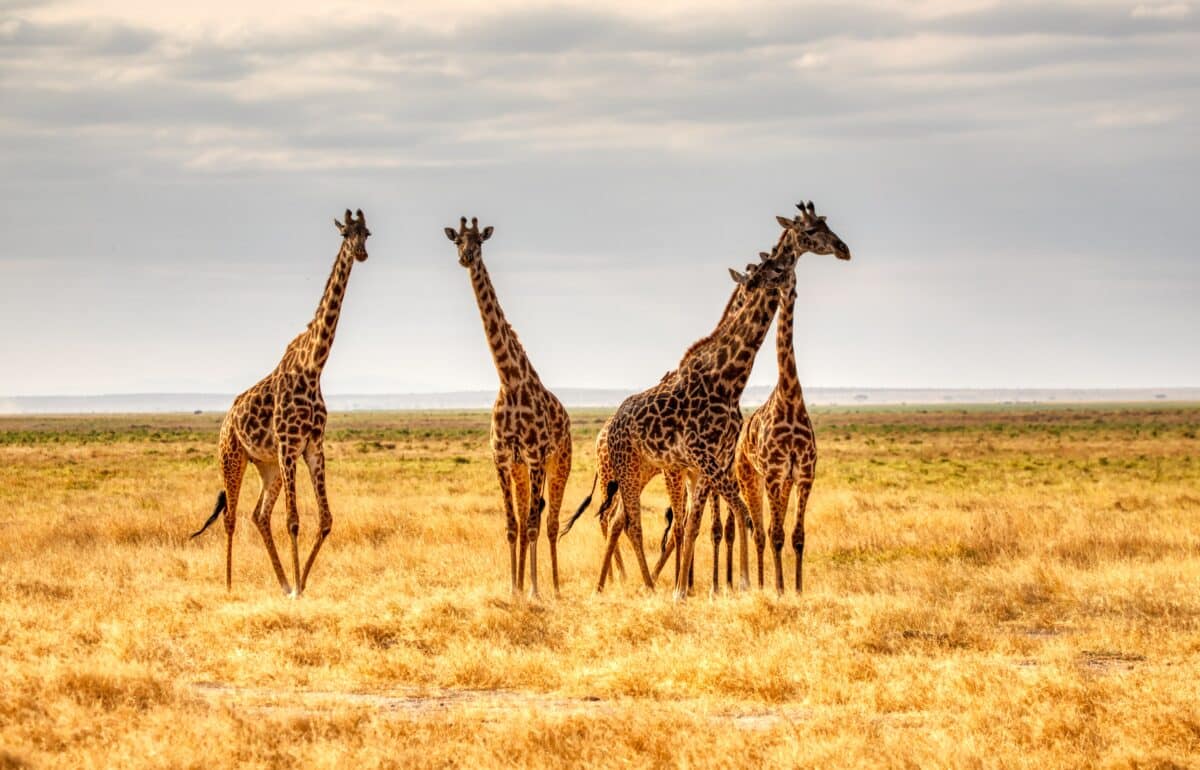
Similar to the encounter described by Lailvaux, other observations have shown giraffes standing beside the body of a deceased companion for extended periods. This is reminiscent of elephants, known to stand over the bodies of their dead, seemingly in mourning.
Group Behaviour

At times, other giraffes join in, standing near a deceased individual collectively. This behaviour can last for hours, suggesting a communal acknowledgement of the loss.
Distress Calls
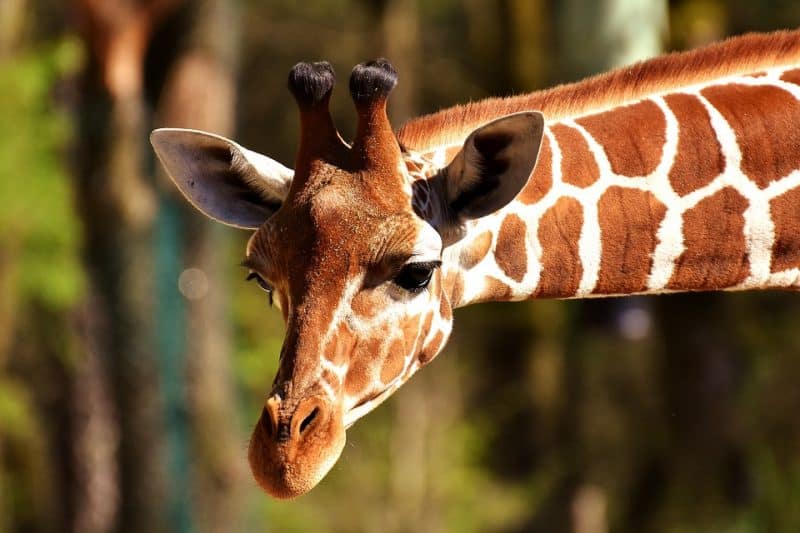
While giraffes are generally quiet animals, they have been known to emit vocalizations under stress, such as when separated from their calves. It remains a topic of study whether they vocalize due to the death of a group member.
Watch Giraffe Behaviour Captured By Ranger Lailvaux

Watch the giraffe behaviour captured my ranger Lailvaux, click here
Grief in the Animal Kingdom
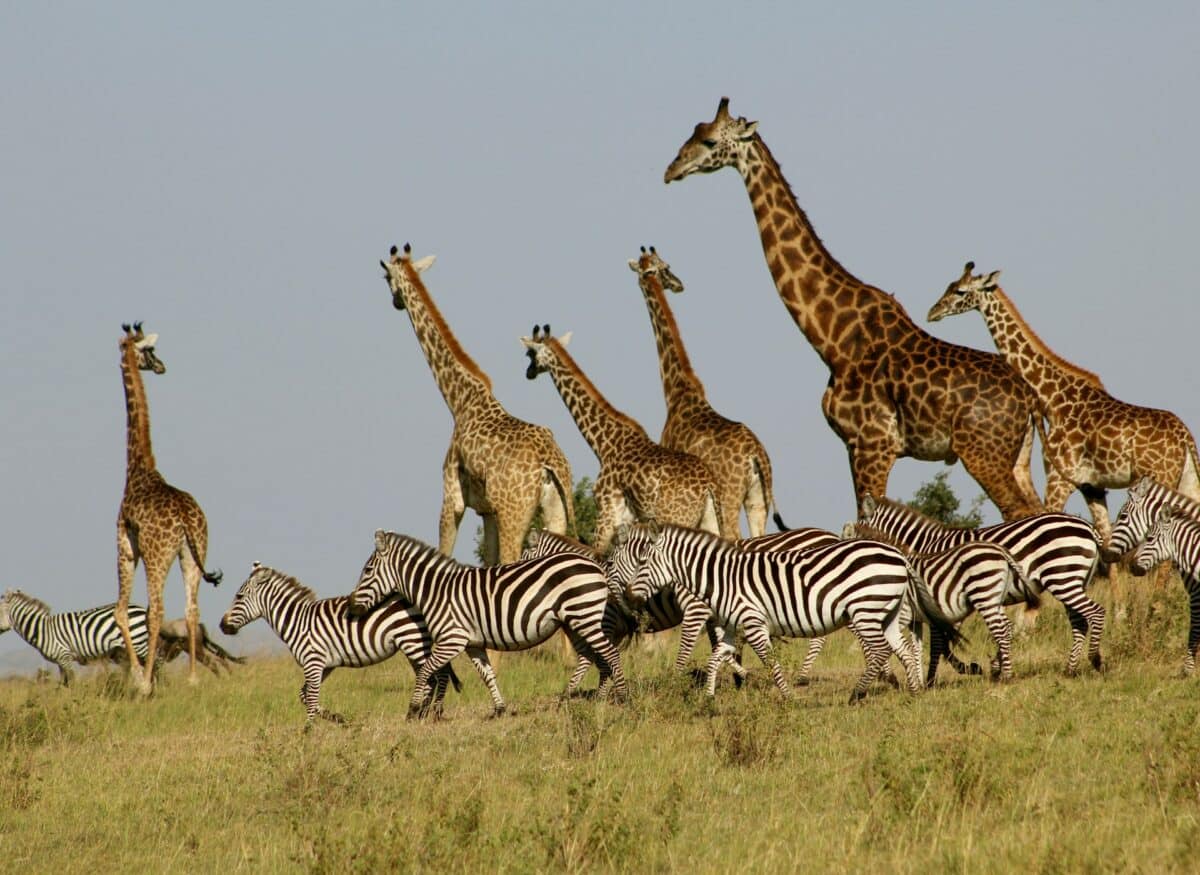
Several species display behaviours that suggest mourning. Can you guess which names share this behaviour?
Elephants

Widely recognized for their intelligence and deep social bonds, scientists have observed elephants showing clear signs of distress when a member of their group dies.
Dolphins

Researchers have witnessed these marine mammals carrying the bodies of their dead calves, sometimes for days, indicating a deep sense of loss.
Primates
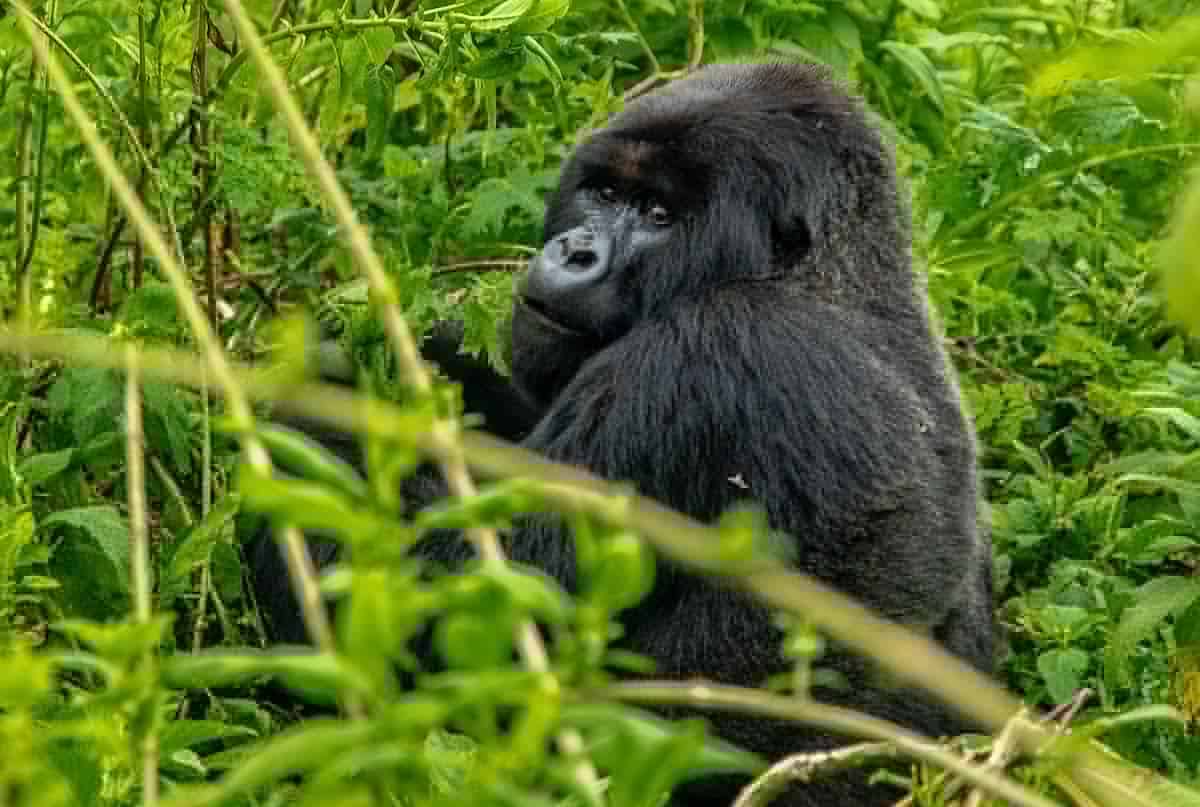
Chimpanzees and gorillas, our closest relatives, have been observed mourning their dead.
What We Don’t Fully Understand
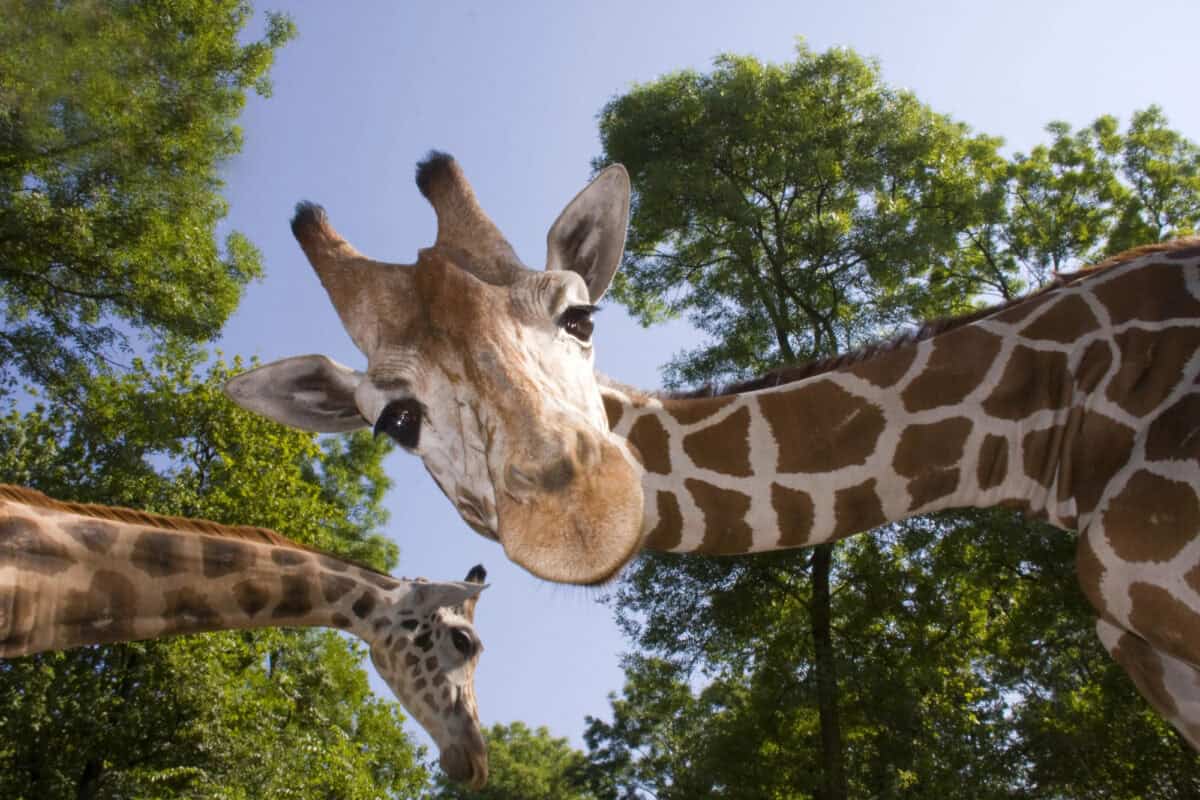
While we’ve made strides in understanding giraffe behaviour, many questions remain. Let’s explore these.
Neurological Basis of Emotion
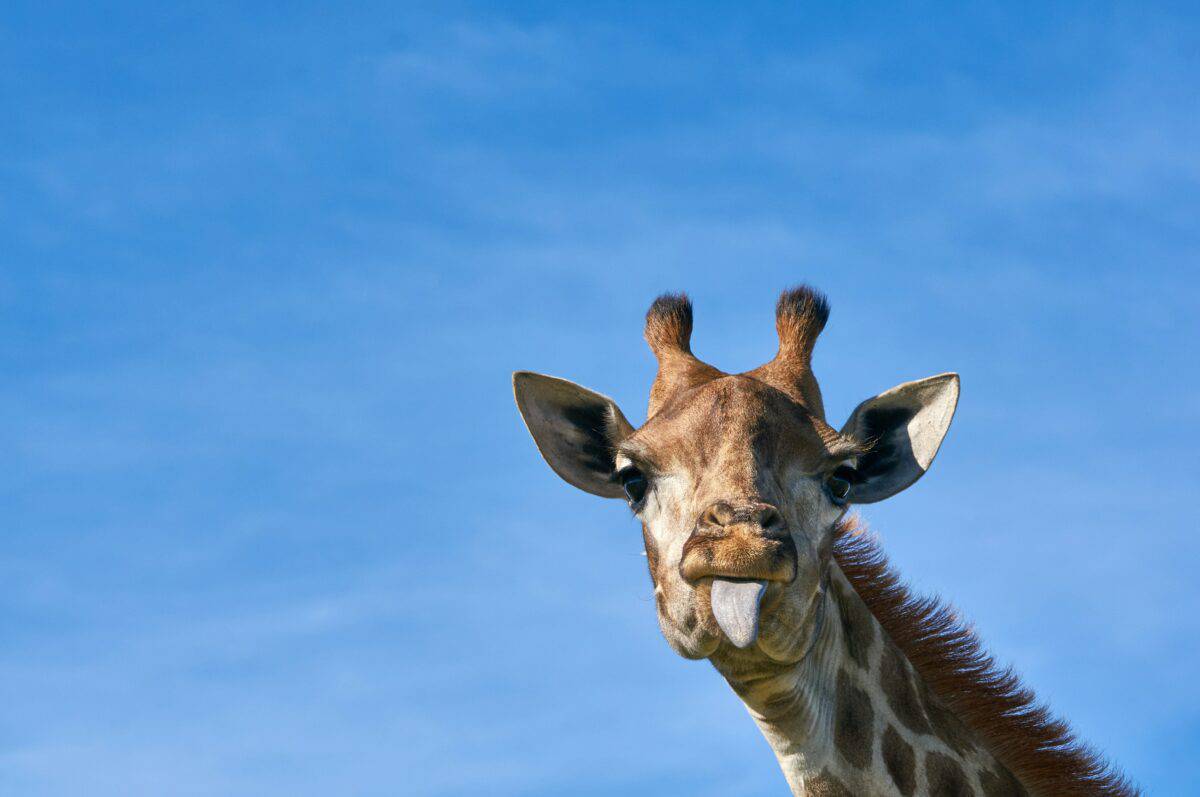
Like many mammals, giraffes likely have brain regions responsible for processing emotions. The limbic system, common in mammals, plays a role in emotional processing. Understanding how giraffes’ brains process grief would offer deeper insights.
Vocalizations and Communication
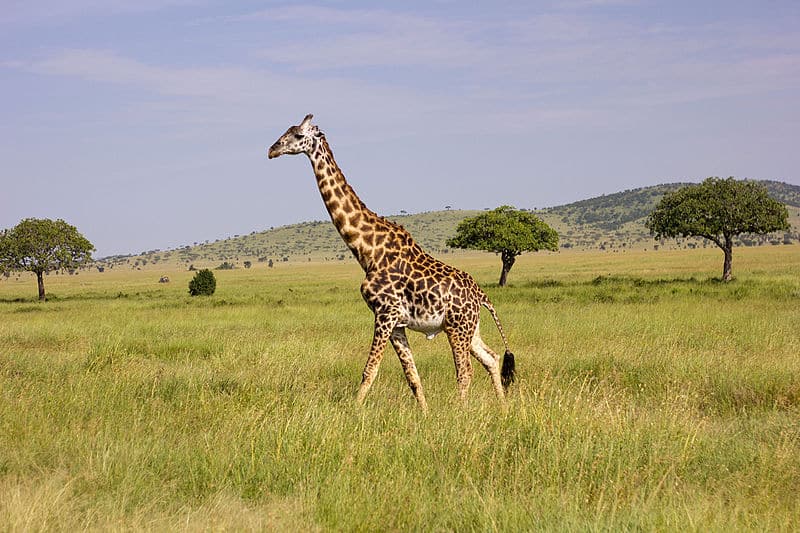
Giraffes produce various sounds, including hums and grunts. Some of these might be associated with specific emotions or situations, potentially conveying distress or grief.
Behavioural Context
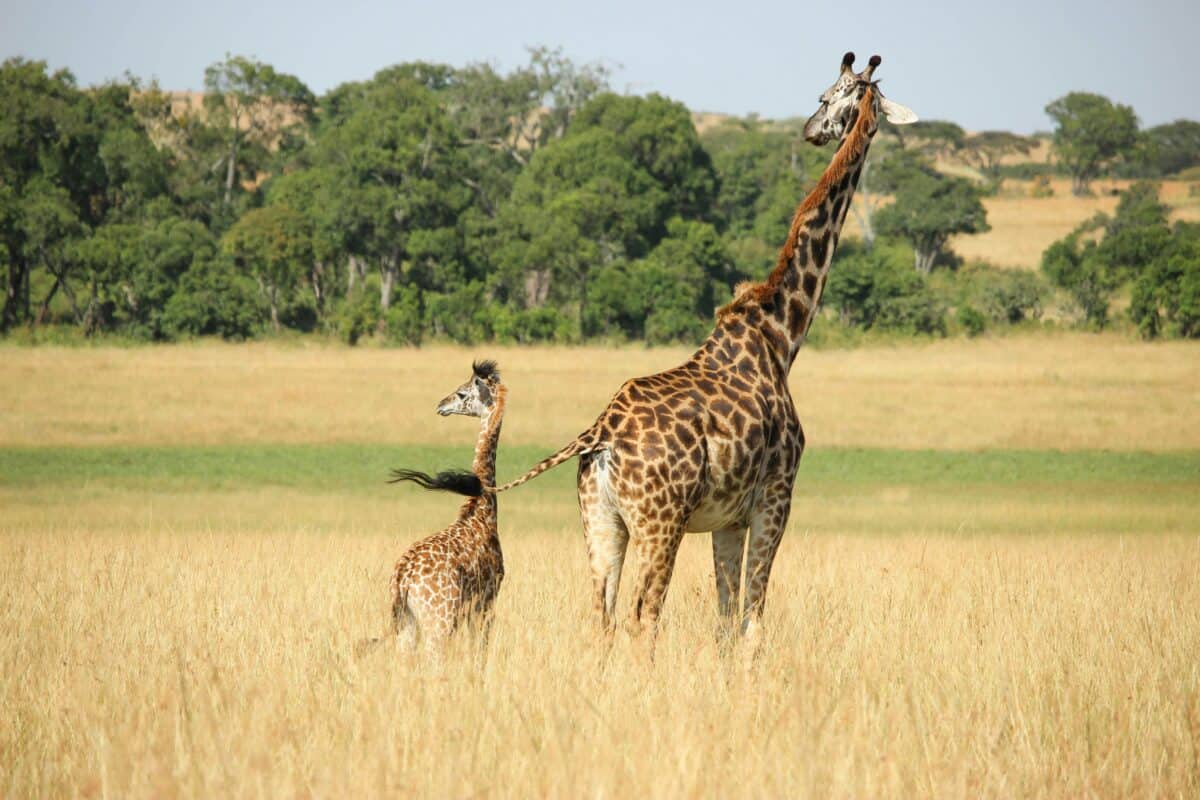
Standing vigil is often cited as potential mourning behavior. However, giraffes might also stand still for other reasons, such as assessing threats. Observing the same behavior in various situations can help determine its specific meaning.
Cultural or Group Differences
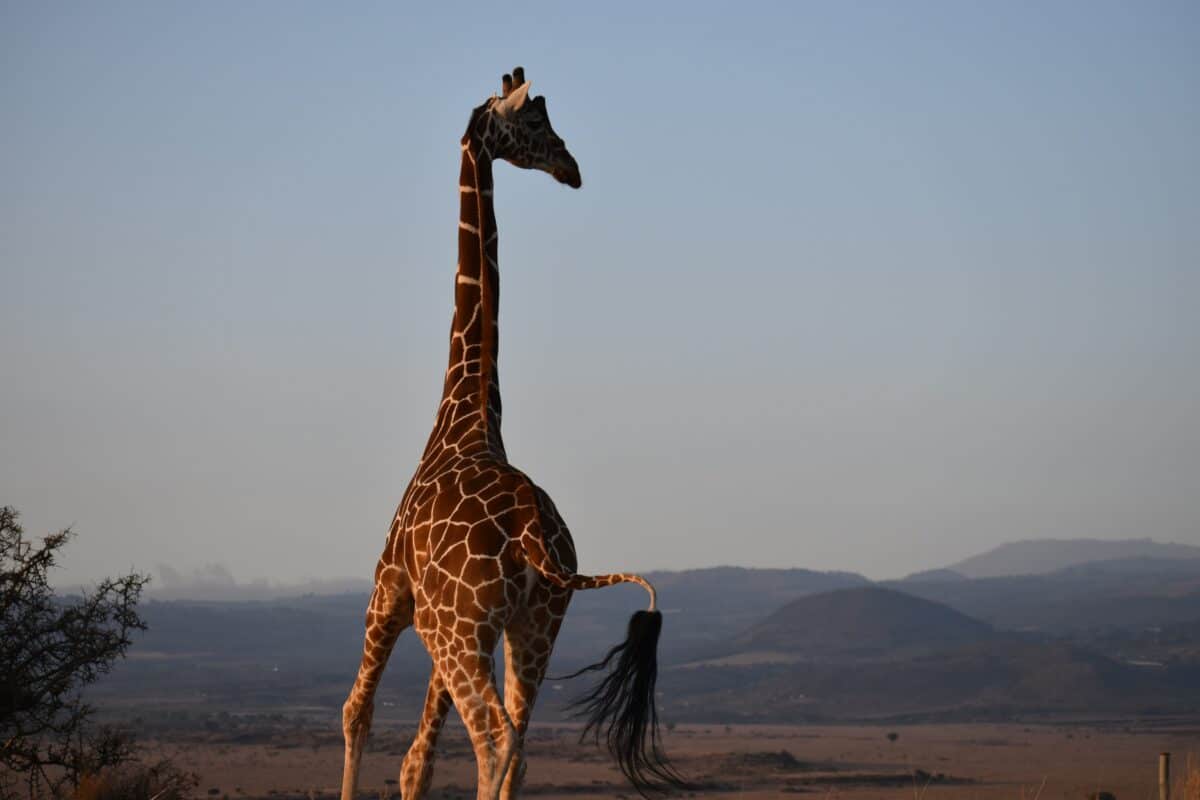
Different giraffe populations might have unique ways of responding to death, requiring extensive observation across multiple groups and regions.
Long-term Behavioural Impact

If giraffes form strong social bonds, the loss of a member could impact group dynamics or individual behaviors, similar to species known to mourn, like elephants.
Comparative Emotions
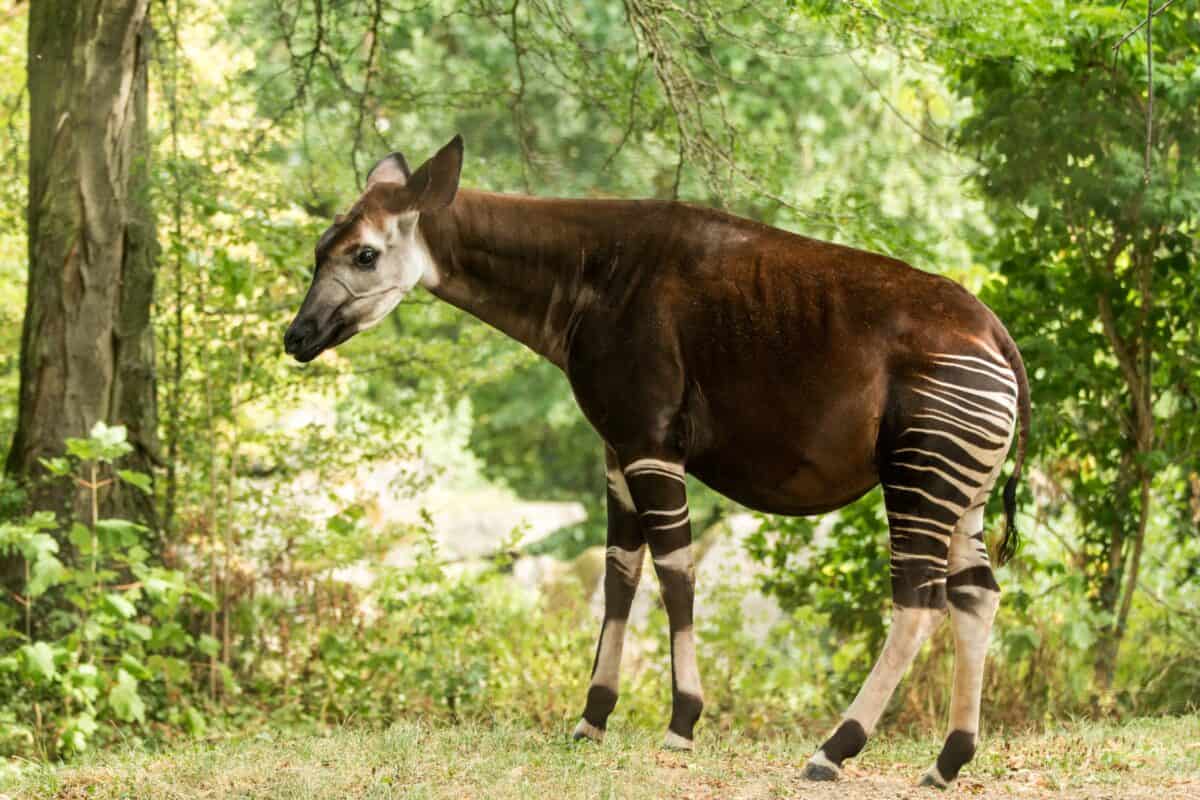
Studying the okapi, a relative of the giraffe, might offer insights. Similar behaviors in response to death in both species could suggest an evolutionary or shared trait.
Final Thoughts On This Intriguing Safari Sighting
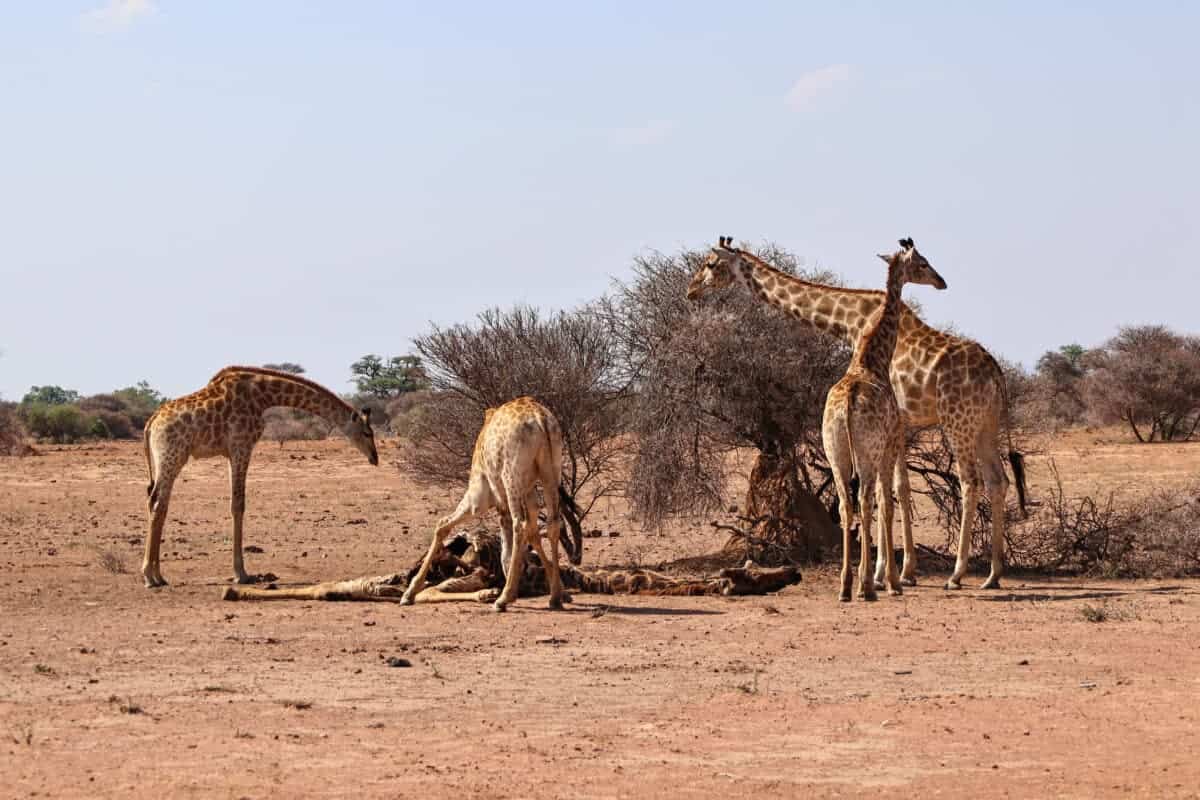
Game ranger Matt Lailvaux at Marataba Camps in South Africa made this intriguing observation. Lailvaux’s encounter with giraffes engaging in unusual behavior near a fallen male giraffe hints at the possibility of mourning in these creatures.
However, many questions remain unanswered, including the neurological basis of emotion in giraffes, the meaning behind their vocalizations, and the specific contexts in which they exhibit mourning behaviors. Understanding these aspects requires further research and observation.
The world of animal emotions continues to offer intriguing insights, and the Marataba Camps observation serves as a valuable starting point for deeper exploration into this fascinating aspect of giraffe behavior.
If you enjoyed this article, read more on
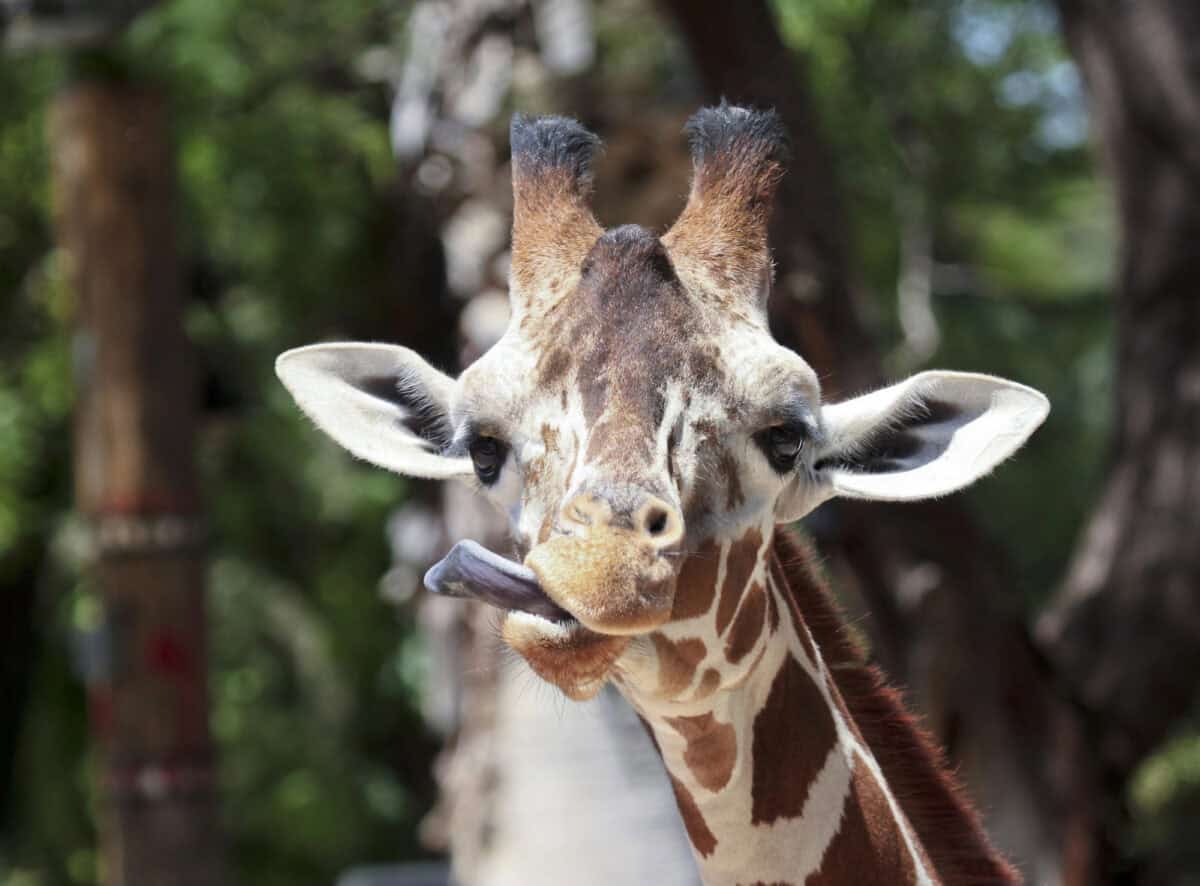
- Get to Know the Tallest Giraffes Ever Recorded
- Where to See Giraffes
- Giraffe crashes into family’s car at wildlife centre
Join our Forum for free today!

- 750-Pound Alligator Pet Seized From New York Man’s Home After 30 Years - June 25, 2024
- Colorado Elk in Estes Park Sheds It’s Unicorn Horn - June 25, 2024
- This Man Has Bonded With A 800-Pound Polar Bear - June 24, 2024

